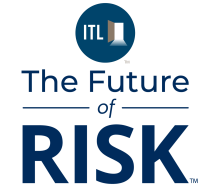At Send's INFUSE April 2025 webinar, we explored a question many in our industry have been asking for years, but perhaps never more seriously than right now:
Is this the year AI goes mainstream in insurance?
From my vantage point at Sixfold, working directly with underwriting and operations teams to implement AI into core workflows, the answer feels clearer than ever:
Yes, if we focus on execution over experimentation.
The hype around AI is not new. But what's changing in 2025 is that AI is no longer confined to innovation teams or isolated proof-of-concepts. It's showing up in daily underwriting, claims triage, and delegated authority oversight, and doing so in a way that improves business results.
Here are five takeaways from the INFUSE discussion and what I'm seeing in the market right now.
1. We've Moved Past the Chatbot Phase
There was a time when AI in insurance meant a chatbot or a clever email assistant. But that phase is behind us. Today, carriers and MGAs are deploying AI to help triage submissions, extract unstructured data from highly variable documents and emails, and flag risks that fall outside appetite.
In short, AI is no longer theoretical. It's operational.
And insurers are realizing that they've long been ahead of the curve in key areas like data science and predictive modeling. What's new is embedding that intelligence directly into workflows.
2. Practical Uses Are Driving Momentum
One of the reasons AI is sticking this time is because it's solving real problems. Manual document processing. Risk triage. Data normalization. Appetite checks. These are not innovation buzzwords, they're the day-to-day blockers underwriters face, and we now have the tools to tackle them.
AI isn't being dropped into the business from above. It's being built around specific uses that create efficiency and unlock underwriting capacity.
3. AI Should Augment, Not Automate Away
At Sixfold, we're strong believers that AI should support underwriters, not replace them.
During the panel, I mentioned this specifically, and it's something we frequently hear from our users: AI gives underwriters back the time to think, to strategize, and to focus on what matters. It takes on the repetitive, facts-based work, so underwriters can focus on judgment, negotiation, and client relationships.
That distinction is critical. The industry doesn't want AI to take over. It wants AI that empowers its experts and amplifies the impact of every underwriter.
4. You Don't Need to Rip and Replace
One of the most common barriers I hear is, "We want to modernize, but we're still working with legacy systems." The good news is: you don't need a greenfield environment to get started.
At INFUSE, Paul Armstrong from AWS put it perfectly: You can start small. You can integrate modular tools into your underwriting process, things like ingestion, enrichment, or renewal comparison, and test the value before scaling.
The key is to be surgical, not sweeping. Solve a specific problem. Show the result. Then move to the next.
5. Trust Is What Makes It Stick
While we didn't dwell on the term "explainability" during the session, the importance of trust came through loud and clear.
Underwriters want to understand how recommendations are made. They want to know that what the AI is surfacing is based on real logic, not a black box.
If AI is going to become a true partner in underwriting, it has to earn that trust. That means surfacing insights clearly, showing the source of decisions, and giving users the ability to validate what's under the hood.
Final Thought: Execution Wins
So, will 2025 be the year AI finally goes mainstream in insurance?
I believe it can be. But only if we shift from strategy to execution. The technology is ready. The uses are known. What matters now is enabling teams, aligning business owners, and embedding AI where it can drive measurable outcomes.
This isn't about adopting AI for its own sake. It's about solving real problems with tools that work.
And in that sense, AI isn't a futuristic idea anymore, it's just smart business.






